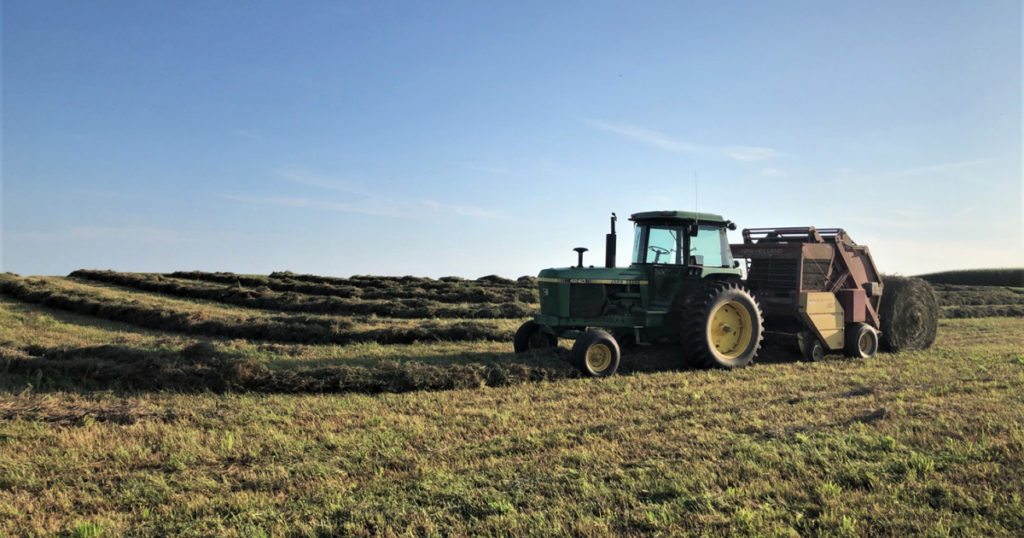October 7, 2019 – A drive along a country road in late summer can bring the beauty of hay bales laying in fields. Some are round bales, while others are square. The October 7th Sustainable, Secure Food blog explores the reasons behind the different shapes in hay bales.
“Hay production has seen dramatic changes over the last 50 years,” says blogger Gary Bates. “The hay itself – alfalfa and grasses – has increased in nutritive value. And, there are even changes in how it’s baled.” Bates works at the University of Tennessee.
“Back in the 1950s and 60s, most hay was put up in square bales. These rectangular-shaped bales usually weighed 50-60 pounds. They were shaped in a way that they could be stacked in a hayloft or barn until they were needed, and this stacking was done by human labor.”
“Starting in the 1970’s new machinery caused a revolution in hay making. Large round balers became available so that now, much of the hay put up across the country is in large, round bales. The round bales can weigh 1000 pounds or more.”
“Round bales have the same amount of hay as about twenty square bales. The technology to make large round bales has taken a job that might take three or four people and made it a one-person job. For a farmer who may use or sell several hundred round bales during the winter, that makes a big difference in time and money.”
To read the entire blog, visit: https://sustainable-secure-food-blog.com/2019/11/07/what-is-urban-ecology-and-why-is-it-important
This blog is sponsored and written by members of the American Society of Agronomy and Crop Science Society of America. Our members are researchers and trained, certified professionals in the areas of growing our world’s food supply, while protecting our environment. They work at universities, government research facilities, and private businesses across the United States and the world.
Original post https://alertarticles.info
